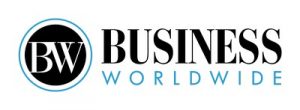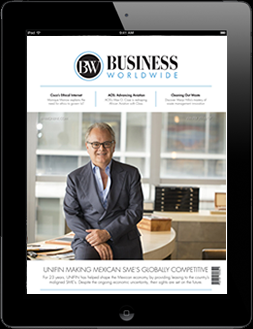The world of advertising in the Out-of-Home (OOH) Media industry is fast-moving and competitive. Assets (such as giant billboards in Times Square and on Sunset Strip) from one of the industry’s top players came up for grabs recently. A leading Media and Tech investment banker with more than 15 years’ experience in Mergers and Acquisitions, Mark Boidman was the right choice to help OUTFRONT Media take-over these major market OOH assets.
What was the deal?
The acquisition by CBS Outdoor Americas of Van Wagner Communications’ major market outdoor advertising businesses in October 2014. The deal value was USD 690 million in cash and resulted in CBS Outdoor* acquiring approximately 1,100 large format billboard displays in a total of 11 US markets. The deal was completed via an auction process.
*Last year CBS Outdoor was renamed OUTFRONT Media
What was the significance of this deal?
For OUTFRONT Media, one of North America, Latin America and Canada’s leading Out-of-Home (OOH) Media companies, the acquisition of Van Wagner’s outdoor assets allowed the company to grow and diversify an already successful business. It was also in line with their national advertising strategy and allowed them to enhance their digital platform.
When we say “Out-of-Home” Media, we’re referring to media that engages with individuals outside of their homes (i.e., not television or a desktop computer). OOH Media consists of displayed content and advertising – whether on a screen, billboard, or even a mobile device.
The OUTFRONT Media-Van Wagner transaction was unusual primarily because of the unique nature of the assets involved. Aside from being historically significant within the sector, there hadn’t been many outdoor media transactions like it within the past few years. The iconic locations to which Van Wagner had the rights were very important for OUTFRONT Media. Van Wagner had digital billboards in Times Square, Sunset Boulevard, the Las Vegas Strip and throughout prime locations in Miami, Boston and Chicago. Having been successful in the acquisition, today OUTFRONT Media’s footprint includes more than 380,000 digital and static displays in high-profile and high-traffic locations within the top 25 markets in the U.S.
What was your role in the deal?
We served as financial advisor. Our charge was to advise the OUTFRONT Media team with respect to buying strategy, tactics and valuation.
In addition to the technical expertise we were able to contribute, we also had an established relationship with the team at Van Wagner. I had previously worked with Van Wagner as an advisor over the years in a variety of transactions, and given our relationship with OUTFRONT Media, it meant PJSC knew both of the companies well. We work closely with many key people in the industry, and always try to stay ahead of the game in the sector.
What’s the future of OOH Media?
With consumers increasingly engaging in digital OOH media and signage nearly everywhere outside of their homes where contextually relevant content and advertising are provided, the opportunities for growth in this industry are almost infinite. Clever entrepreneurs lead to exciting possibilities in the sector, for example technological innovations have allowed content to be delivered to consumers in gas stations, bars/restaurants, grocery stores, movie theaters, health clubs, hotels, arenas and stadiums, shopping outlets, at their doctors’ offices and hospitals, at airports and other transit locations. Research shows us that the demand for such content by the consumer is there, and in that sense, the opportunities for advertisers have also been augmented.
One area of particularly increasing growth is in the form of what I call “spectacular” billboards in iconic locations such as Times Square or Sunset Boulevard. In addition to the areas outside of the home that lend themselves to pedestrian level signage, “spectacular” billboards placed in areas with high dwell time also provide social media, gaming, digital commerce and mobile ad retargeting opportunities.
New technology has led to more consumer interactivity with these installations, as well as added flexibility for companies. Content can be streamed across digital networks (rather than displayed on one billboard as in the past). At the same time the actual hardware and technology costs are declining, making it an increasingly cost-effective solution even for small businesses.
Geolocation (identifying where an individual is via his or her smartphone) is especially revolutionary in marketing terms. Quick service restaurants for instance are using OOH media to help create a geo-fenced area around their outlets. This would notify staff when a customer is approaching and allow them to prepare the meal for the customer as he or she arrives (having ordered it via their restaurant app just minutes before the customer’s arrival).
Technology like this enables companies to better understand their customers and their behavior, which , of course, is what all marketers want. In fact, these companies are now able to determine where an individual has been and where they are currently located. They can even predict their future behaviour (i.e., whether they are more likely to go to the movies, for a swim, or to work, etc).
Another exciting example we like to highlight is how the content of digital media displayed on signage in a shopping mall is now able to be changed in real-time, dictated via a shopper’s mood using facial recognition technology. We’re only in the first inning of what is to come from digital OOH media. People continue to do more with the medium than has ever been done before.
Meanwhile, in order to be truly successful, OOH media should focus on making purchasing easier for the consumer and, at the same time, allow the advertiser and the OOH operator to better measure ROI (i.e., the billboard or screen will be able to tell the OOH operator and advertiser how much time an individual has stood in front of it and how many times they have encountered it).
We believe that digital media will lead to enormous and instant gratification for consumers. At the same time it’s the companies who are willing to utilize digital platforms with mobile interaction and cutting-edge technology that will most realize future rewards.
Company Profile
Peter J. Solomon Company (PJSC) is a private partnership, employing around 75 professionals. It provides investment banking advisory services for clients from both the public and private sectors, primarily focused within the fields of global retail, media, entertainment, technology, healthcare services and distribution. PJSC also provides a full menu of recapitalization and restructuring services along with strategic and financial advice, and fairness opinions. More than 500 deals, worth in excess of $175 billion, have benefitted from the firm’s strategic and financial advice since it was founded in 1989.
About Mark Boidman
Regarded as a specialist in his sector, Mark Boidman is a Media and Tech investment banker with more than 15 years’ experience in Mergers and Acquisitions. He is currently a Board Director of the Digital Signage Federation, the trade association supporting the business interests of the interactive technologies, digital signage and digital out-of-home network industries, and a member of the Advisory Board of Gimbal, a location and proximity-based mobile engagement company.
Prior to his current position at PJSC, Boidman served as head of Barclays’ (originally Lehman Brothers) Out-of-Home Advertising, TV Broadcasting and Radio Coverage. He also served as an attorney within the M&A Group at Paul, Weiss, Rifkind, Wharton & Garrison.
Boidman has executed more than $40 billion of transactions. In addition to OUTFRONT Media, his clients have included Cox Enterprises, DirecTV, Discovery Communications, Disney, General Atlantic, Lionsgate Entertainment, Mediacom Communications, Scripps Networks Interactive, and Searchlight Capital.
















